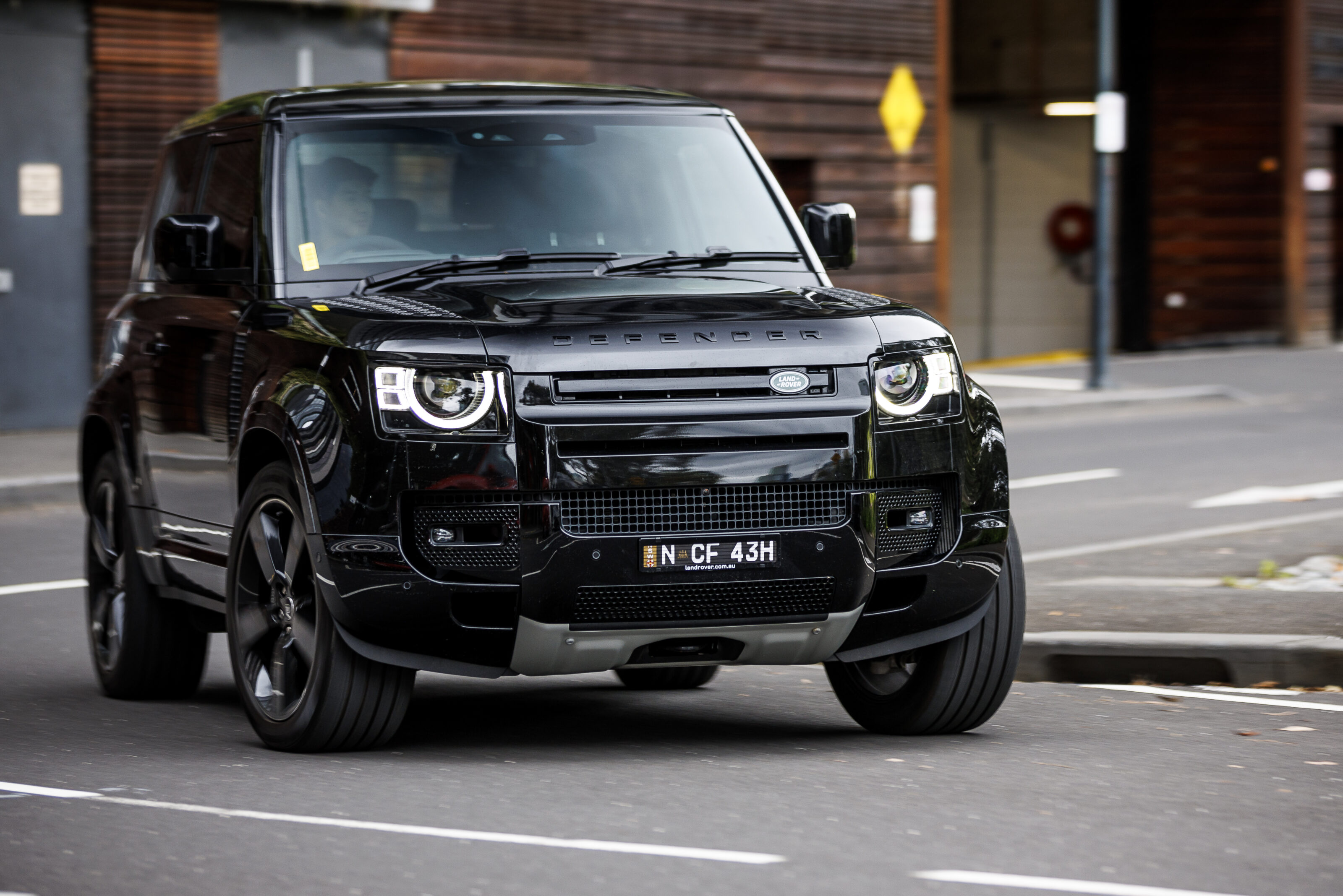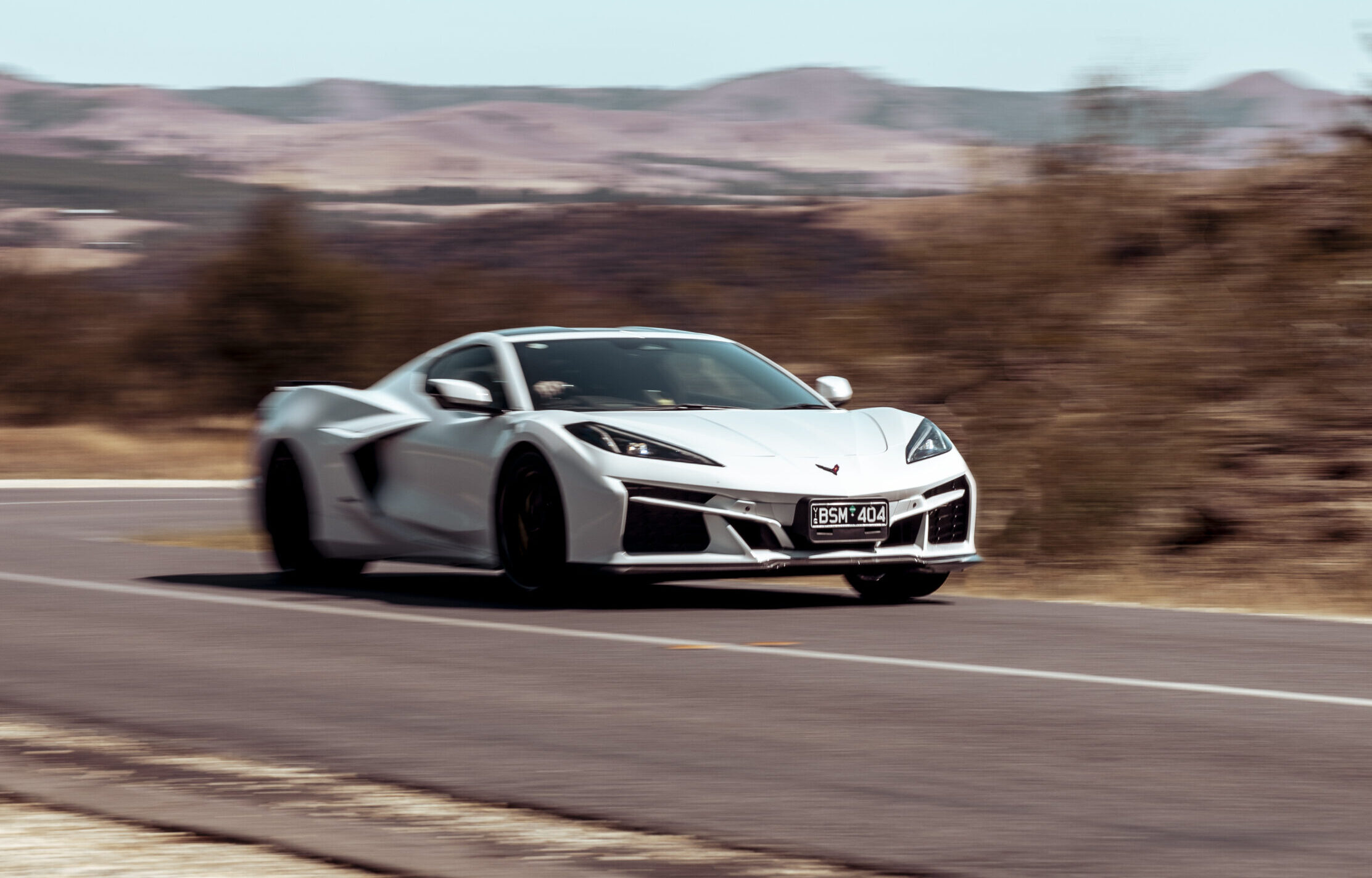Score breakdown
Things we like
- Undeniably cool
- Bulletproof feeling
- Engine to savour (while we can)
Not so much
- Second-row access
- Small useable boot floor
- Rear seats don't fold flat
Given its enduring legacy, the Defender nameplate carries a certain amount of weight behind it. Such weight brings a measure of expectation, and when Land Rover announced the return of its V8-powered icon, in quirky short-wheelbase form to boot, there were many with their own ideas on what the reborn Defender should be.
The 2023 Land Rover P525 Defender 90 is just one of the plain coolest cars on the market, resolutely distinct with confident roadholding and an impossibly charismatic drivetrain.
But does the lustre begin to fade once the practical realities of its downsized dimensions come to the fore?
We spend a week with the V8 ‘shorty’ to find out.

JUMP AHEAD
- How much is it, and what do you get?
- How do rivals compare on paper?
- Interior comfort, space and storage
- What’s it like to drive?
- How is it on fuel?
- How safe is it?
- Warranty and running costs
- VERDICT
- Specifications
How much is it, and what do you get?
The Defender 90 V8 P525 is priced from $221,300 before on-road costs, representing the flagship position in a short-wheelbase Defender range that opens at a comparatively modest $81,950 for the entry-level 2.0-litre turbo-four P300.
Building one of these on Land Rover’s Australian online configurator quotes drive-away pricing of $250,961 for delivery in the state of Victoria.
Land Rover’s most recent MY23.5 updates feature slight packaging revisions offering more choice in the face of lingering semiconductor shortages.
A slimmer 10.0-inch Pivi Pro touchscreen is now standard equipment on lower entry-level, S and SE grades, though the impressive 11.4-inch unit, fitted here as standard, remains available as a no-cost option.
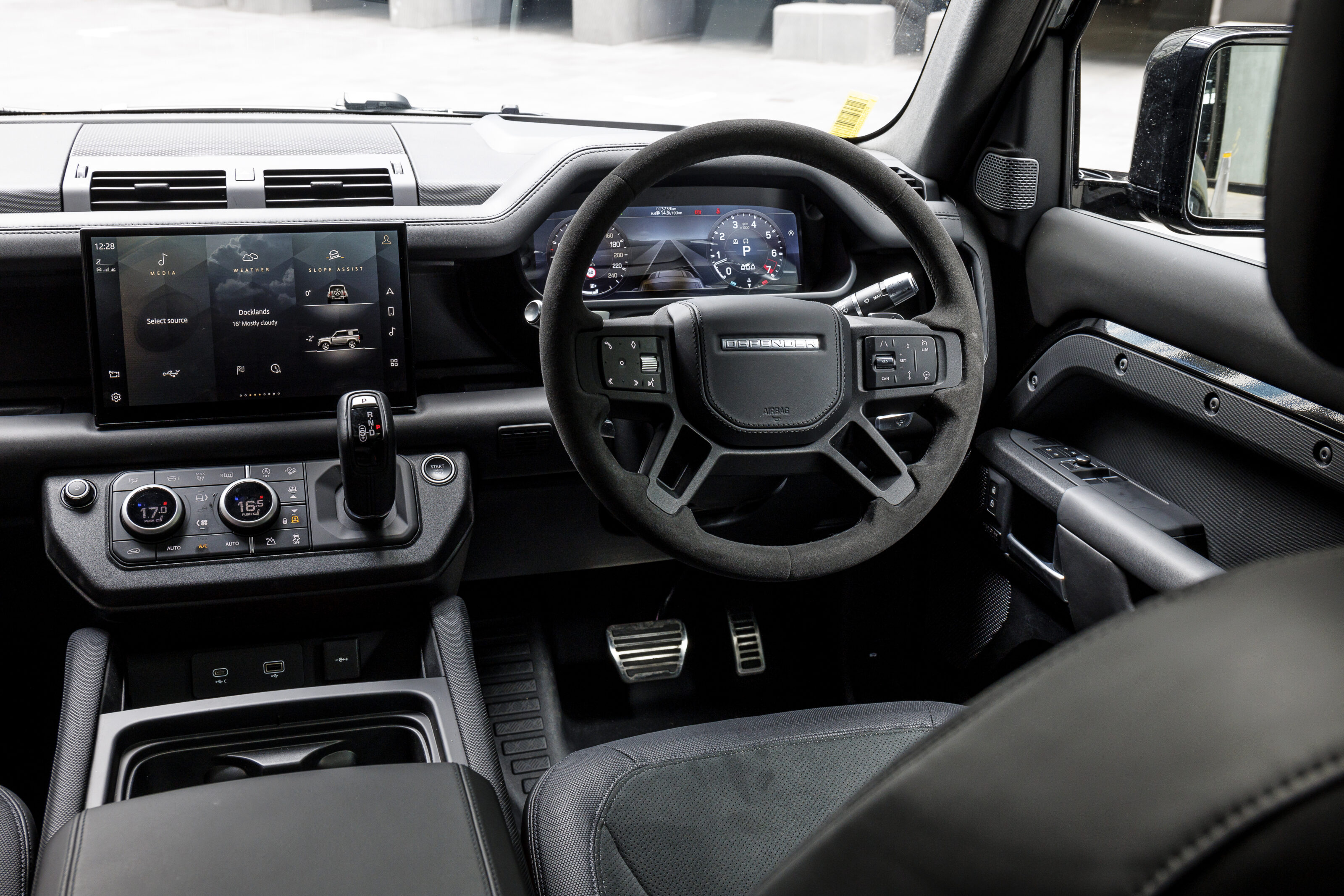
Being a halo model, a V8 Defender comes fully loaded with the best bells and whistles from across the range, including Matrix LED headlights, adaptive air suspension, 15-speaker 700W Meridian surround sound system, 12.0-inch digital instrument cluster, wireless Apple CarPlay and Android Auto, satellite navigation, rain-sensing wipers, adaptive cruise control and more.
V8-specific features include 22-inch five-spoke wheels with full-size spare, quad exhaust tips, suede heated steering wheel, illuminated sill plates with V8 branding, three-zone climate control, refrigerated centre console, heated windscreen and more.
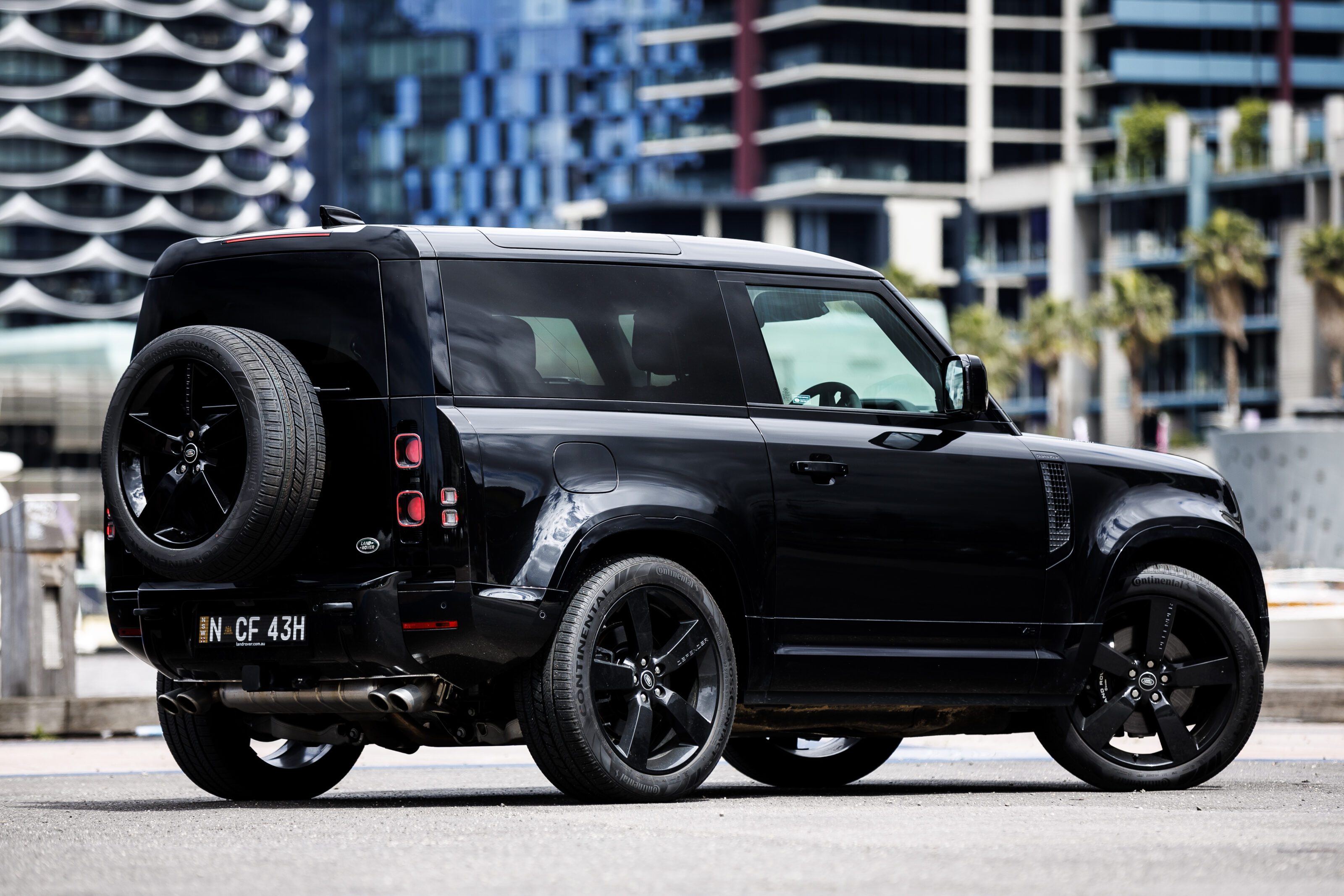
The real party piece, however, is that supercharged 5.0-litre V8.
It can be found around the JLR range in various states of tune, including the non-SVR Range Rover Sport as well as Jaguar F-Type and F-Pace SVR.
In the case of the Defender, the TVS-style supercharged AJ133 5.0-litre V8 produces 386kW and 625Nm, matched with the same ZF eight-speed automatic used by all Land Rover Defenders. V8 models, however, gain a slightly crispier transmission calibration and also gain wheel-mounted paddle shifters.
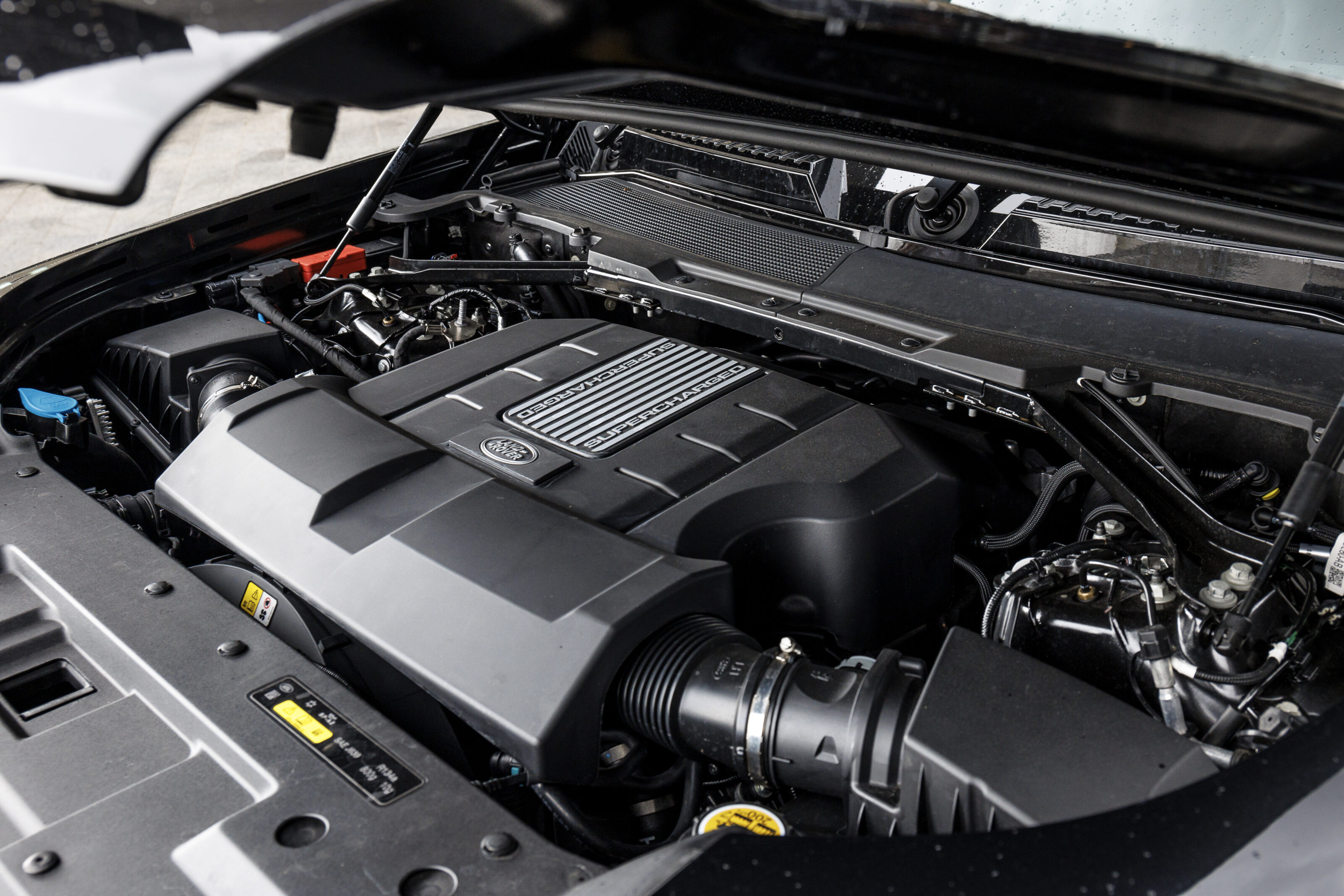
Elsewhere, the eight-cylinder Defender gains an electronic active rear differential and adds a ‘Dynamic’ mode to its Terrain Response system that enables increased performance and dynamism on loose surfaces.
Land Rover also fits the V8 Defender with larger diameter anti-roll bars, stiffer suspension bushes and revised spring and damper rates to cater for the large step up in power and torque.
How do rivals compare on paper?
The Defender V8, especially in its shortened ‘90’ guise, is a bit of a niche vehicle with no direct rivals blending its three-door status, small footprint, off-road chops and V8 power.
Audi’s RS Q8 swings in at a comparable $220,491 (before on-road costs), targeting a similarly premium buyer, and is a significantly more dynamic road car but with less off-road capability.
Porsche’s Cayenne GTS Coupe ($210,400 before on-road costs) is also worth consideration as a holistic five-seat package with a much sharper on-road driving experience but is around 50kW down on power.
Of course, there are also the other requisite German powerhouses, the Mercedes-AMG GLE63 and BMW X5 M, both asking around $230K, and filling the fast family brief.
The much more expensive Mercedes-Benz G63, at $314,897 before on-road costs, frequently draws comparisons for its V8 powerplant, famously rugged design and genuine off-road ability.
Interior comfort, space and storage
The practical price of opting for the funky three-door Defender 90 is that space and packaging take an unavoidable hit over the more conventionally sized Defender 110, and even larger incoming eight-seat Defender 130.
In fact, the Defender ‘shorty’ is exactly that, measuring just 4.3 metres in length (about the same length as a Hyundai i30) despite its wide stance and high-riding seat position giving the illusion of a very large car. That’s approximately 50cm shorter than the larger Defender 110, the brunt of which is felt in the vehicle’s boot space rather than first or second-row comfort.
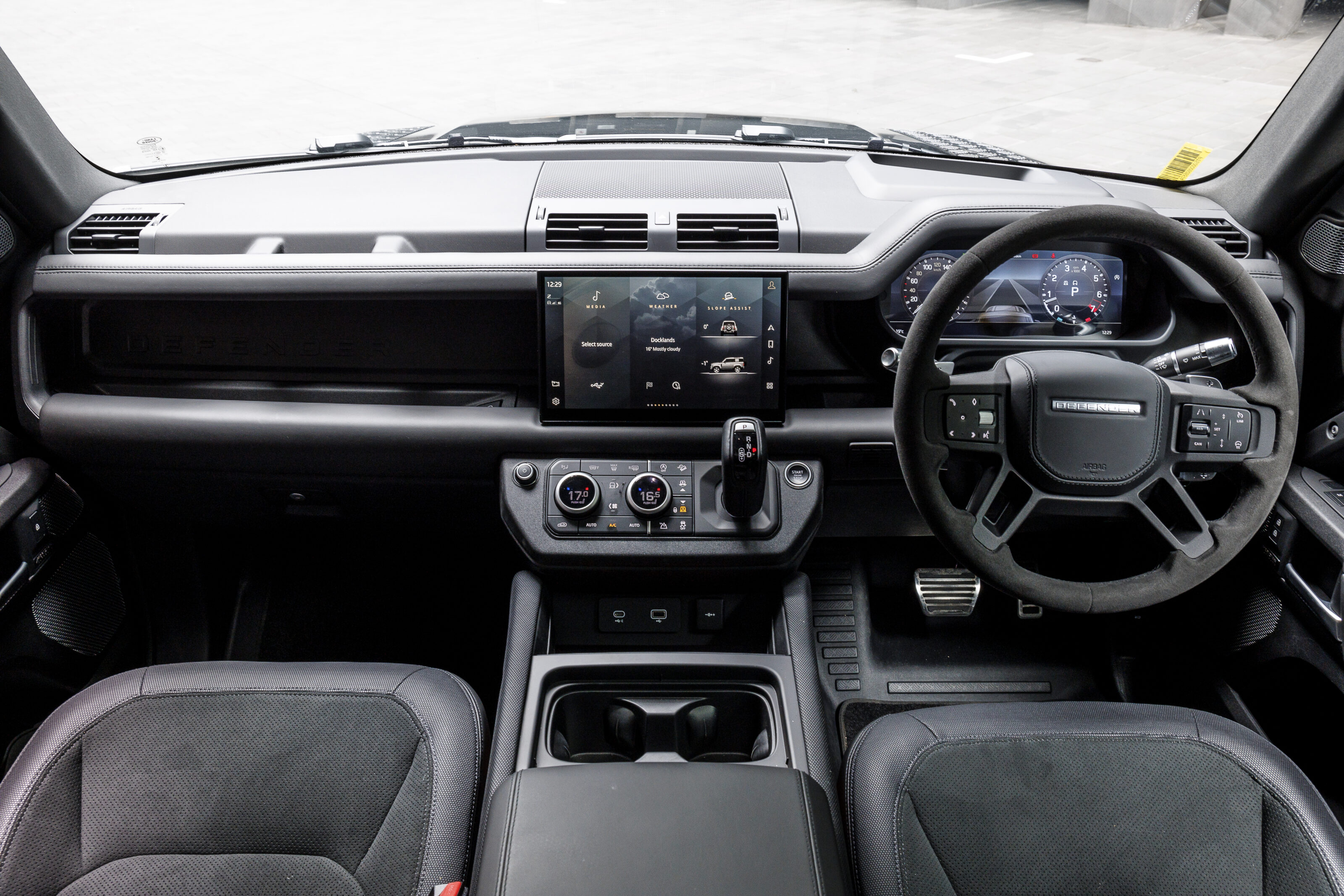
Front occupants are greeted by a cabin that looks and feels rugged and durable, but also one that feels solidly built with quality materials.
Wide, flat and supportive power-adjustable seats are covered in black leather, suedecloth and a durable synthetic material that Land Rover calls ‘Robustec’.
The cabin is very monochrome but maintains an open and airy feel thanks to a panoramic glass roof and the extended surface area of the Defender 90’s big rear-quarter glass.
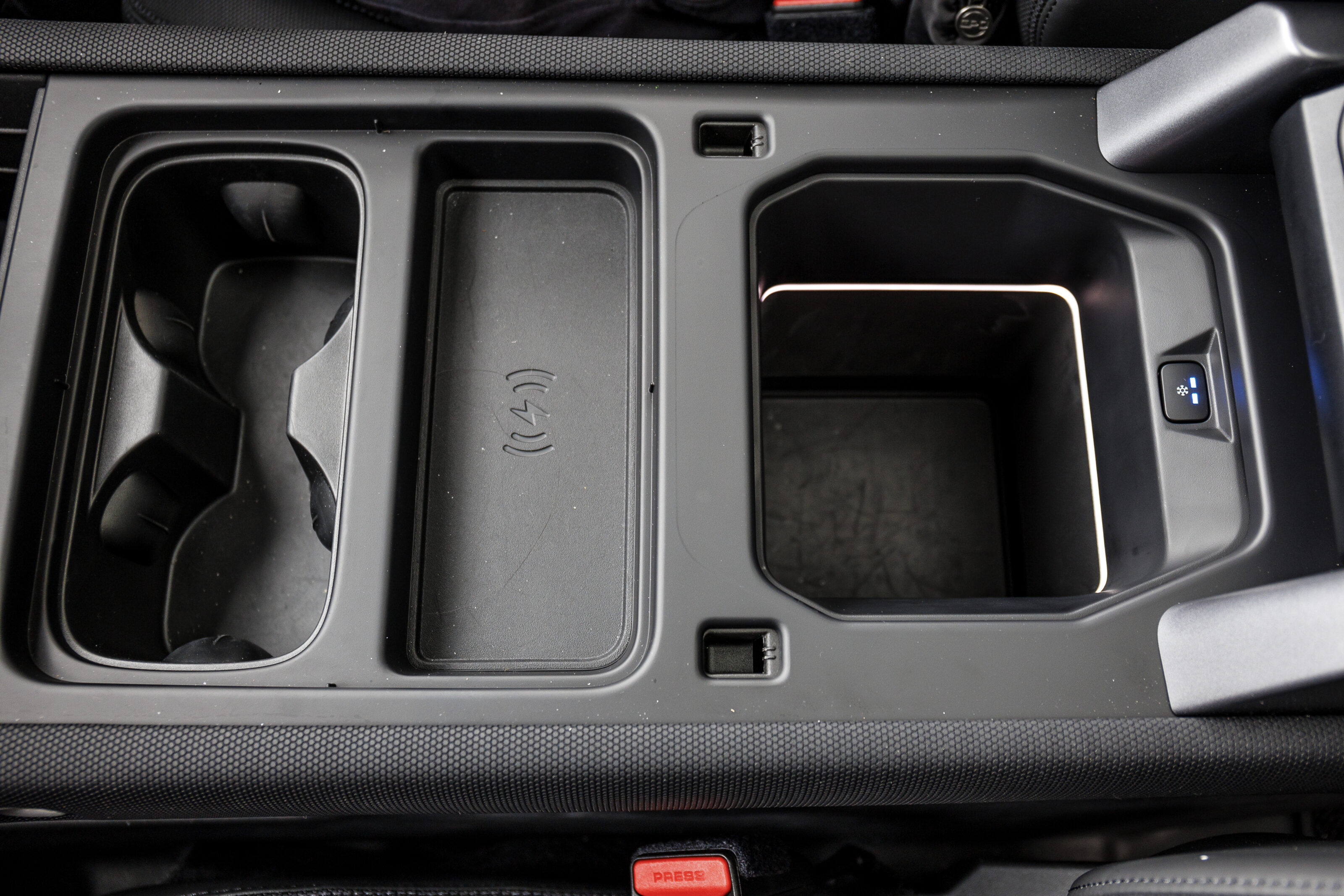
There are many nooks and crannies for day-to-day storage up front. The dashboard fascia itself acts almost as a full-width storage tray with an easily accessible USB-C port for the front passenger.
The versatile dashboard design renders the glovebox quite shallow compared to most vehicles of this size, but there are further stowage trays hidden below the dash-mounted shifter and HVAC controls. There is a further USB-C port and a USB-A socket down there, as well as a 12-volt outlet to cover all of your charging needs.
Atop the floating-style console sit two central cup holders, with a wireless phone charger slotted between them the central armrest. Lifting the armrest reveals a deep refrigerated bin that looks like it will easily accommodate a few cans of soft drink.
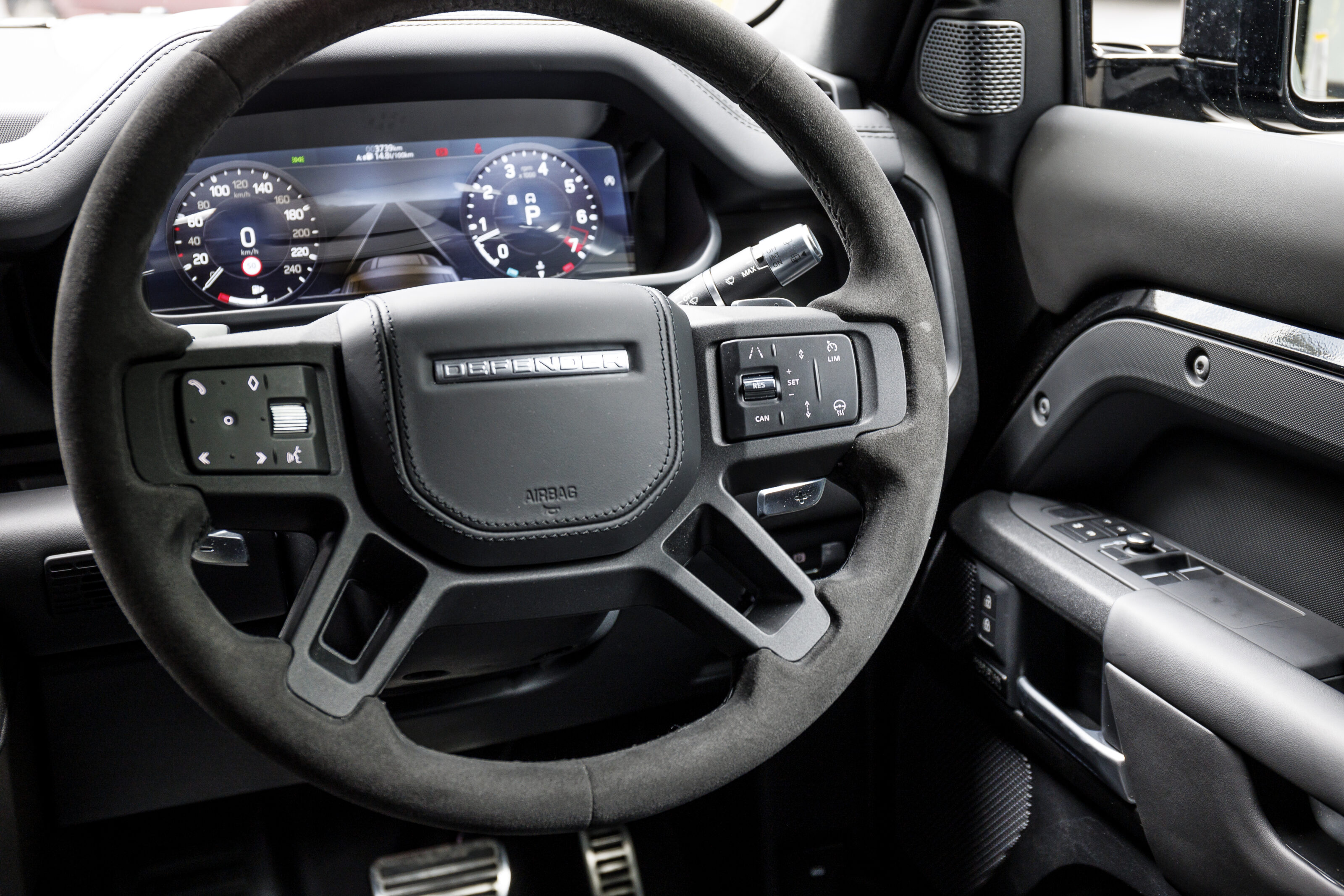
V8 Defenders uniquely gain a suede-wrapped steering wheel, which fits its sporty positioning but does stick out as an otherwise strange packaging choice for such a rough-and-ready outdoor lifestyle vehicle.
Accessing the rear seats is done through the only pair of side doors, by manually tilting the front seats which can then slide forward electrically to create more room to climb in. The aperture for entry remains small and, combined with the Defender’s high ground clearance, does require a bit of a lunge to access the second row.
Once you’re back there, however, it’s surprisingly roomy, with impressive levels of head, leg and foot room.
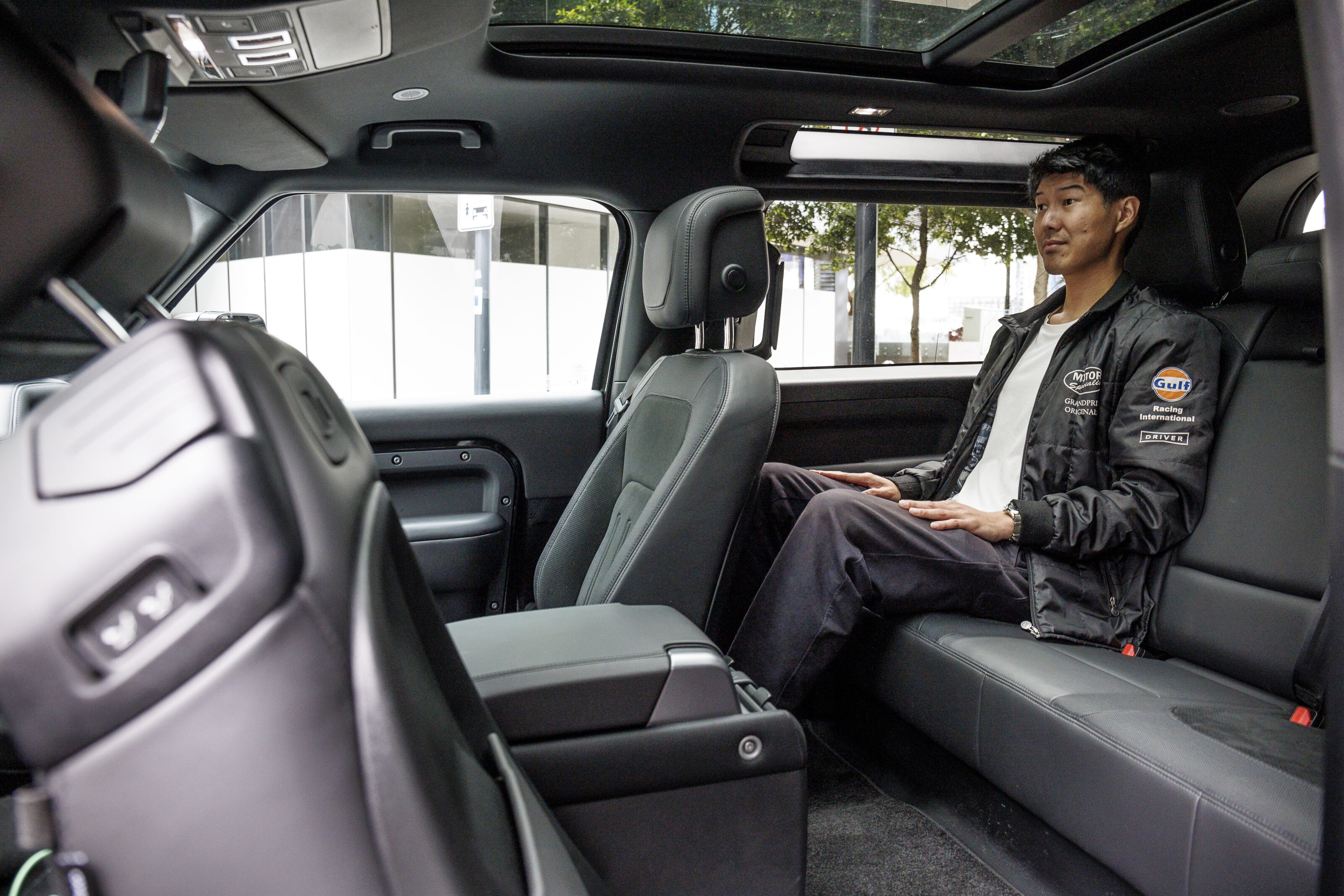
Standard three-zone climate control treats rear occupants to a pair of air vents with their own HVAC controls. There are also two further central USB-C ports and two 12v sockets back here, with outboard rear seats each equipped with a cup holder and small storage bin.
As mentioned, boot space beyond the second row is where the Defender 90’s shortened dimensions are felt most sharply.
Despite a quoted 397L capacity with all five seats in place, the useable boot floor surface area is tremendously shallow and you’ll be packing things to the rafters like a game of Tetris to get anywhere near Land Rover’s boot space claim.
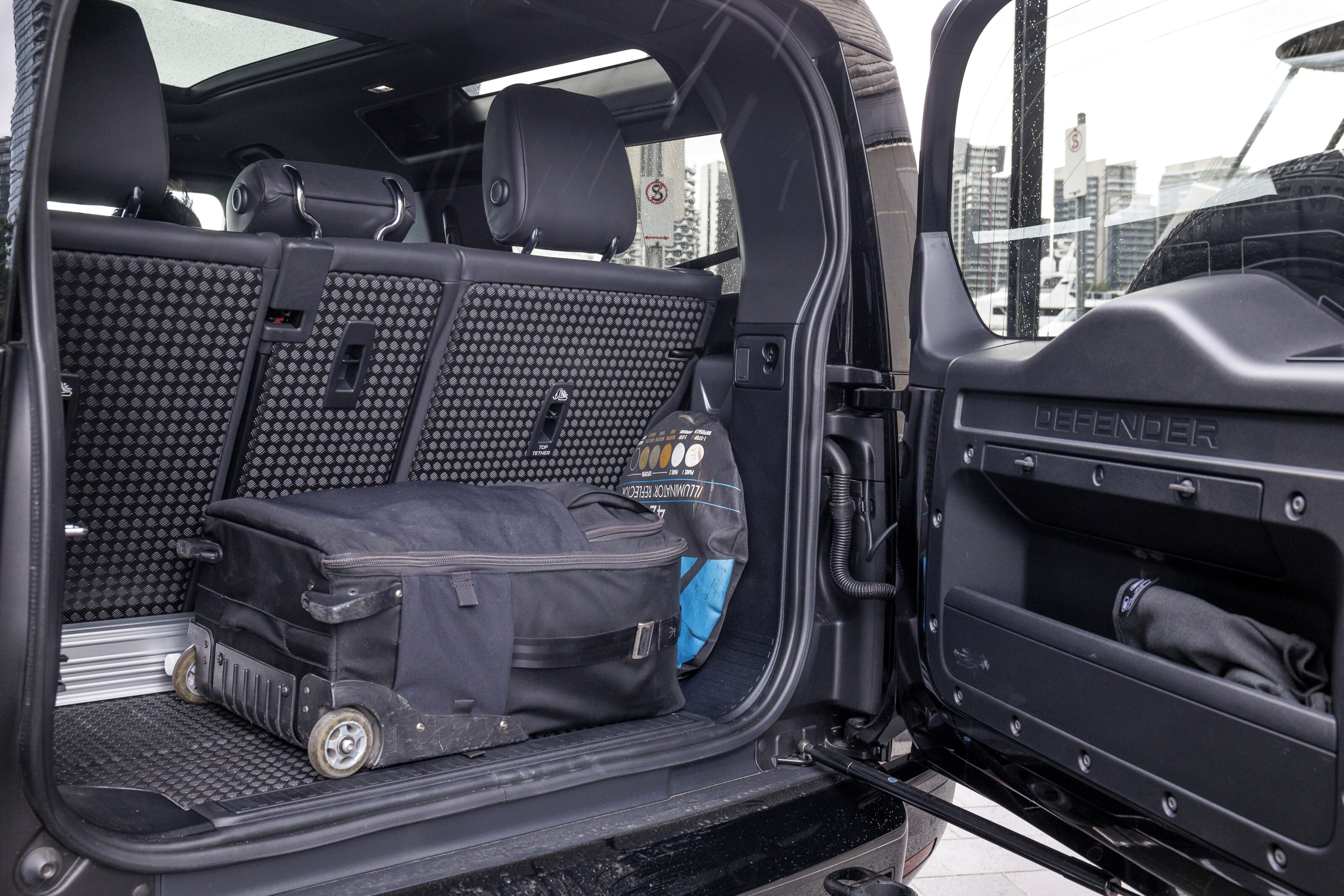
Folding the 40:20:40 rear seats opens the cargo area up to 1563L, but sadly the rear seats don’t fold flat in the Defender 90 like they do in the larger 110, with a large aluminium brace that impedes easy slide-through loading.
What’s it like to drive?
The basics
| Body | 3-door, 5-seat large SUV |
|---|---|
| Drive | permanent four-wheel |
| Engine | 5.0-litre V8 petrol, DOHC, supercharged |
| Power & Torque | 384kW/625Nm |
| Transmission | 8-speed automatic |
| Fuel consumption | 12.7L/100km (tested) |
| Boot min / max | 397L / 1563L |
| Price | $221,300 + on-road costs |
In a word? It’s a riot!
Upon the first squirt of the throttle, it’s hard not to chuckle to yourself at the sound of that supercharged 5.0-litre V8, the dramatic pitch and squat of the short body’s 384kW/625Nm delivery, and the rapidly receding rear view of traffic.
Standing acceleration is startling, delivering peak torque from just 2500rpm before full power deploys at 6000rpm. Its 0-100km/h claim of 5.2 seconds feels achievable, with some North American outlets even dipping into the 4s with their 0-60mph times.
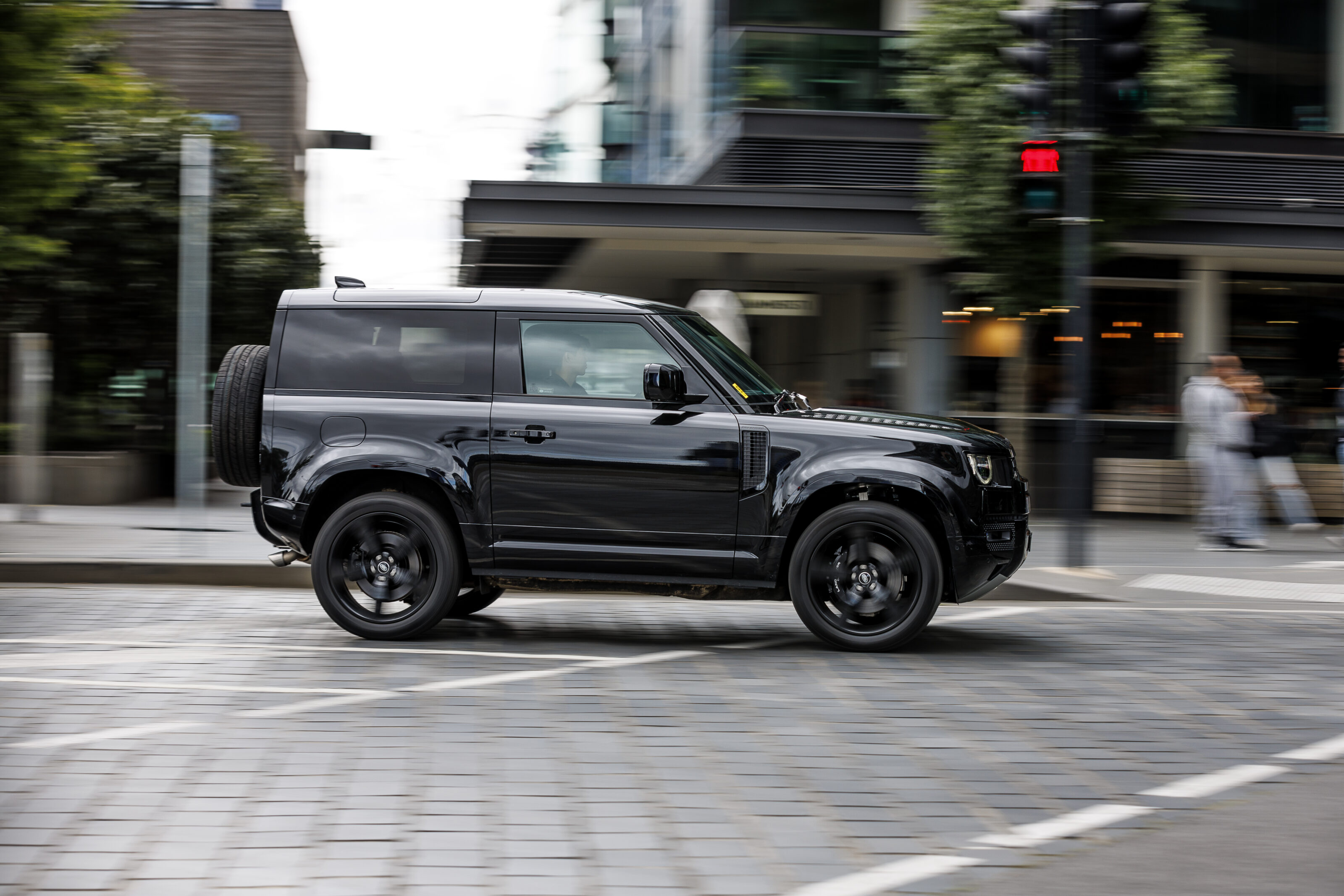
Standing acceleration is startling, delivering peak torque from just 2500rpm before full power deploys at 6000rpm.
Compared to other JLR products fitted with this same supercharged 5.0-litre unit, the eight-cylinder Defender’s exhaust note is delivered with measured grace, and none of the raw metallic snarls of, say, a Jaguar F-Type P450 R-Dynamic. Some subtle in-cabin sound enhancement fits its subtle hot-rod Q-car status, but there were times when we wished for an easily accessible exhaust mode switch for when we wanted to fully channel our inner Bond villain.
Nevertheless, there’s a thread of lunacy and fun throughout the P525 Defender 90, and that’s exactly its charm.
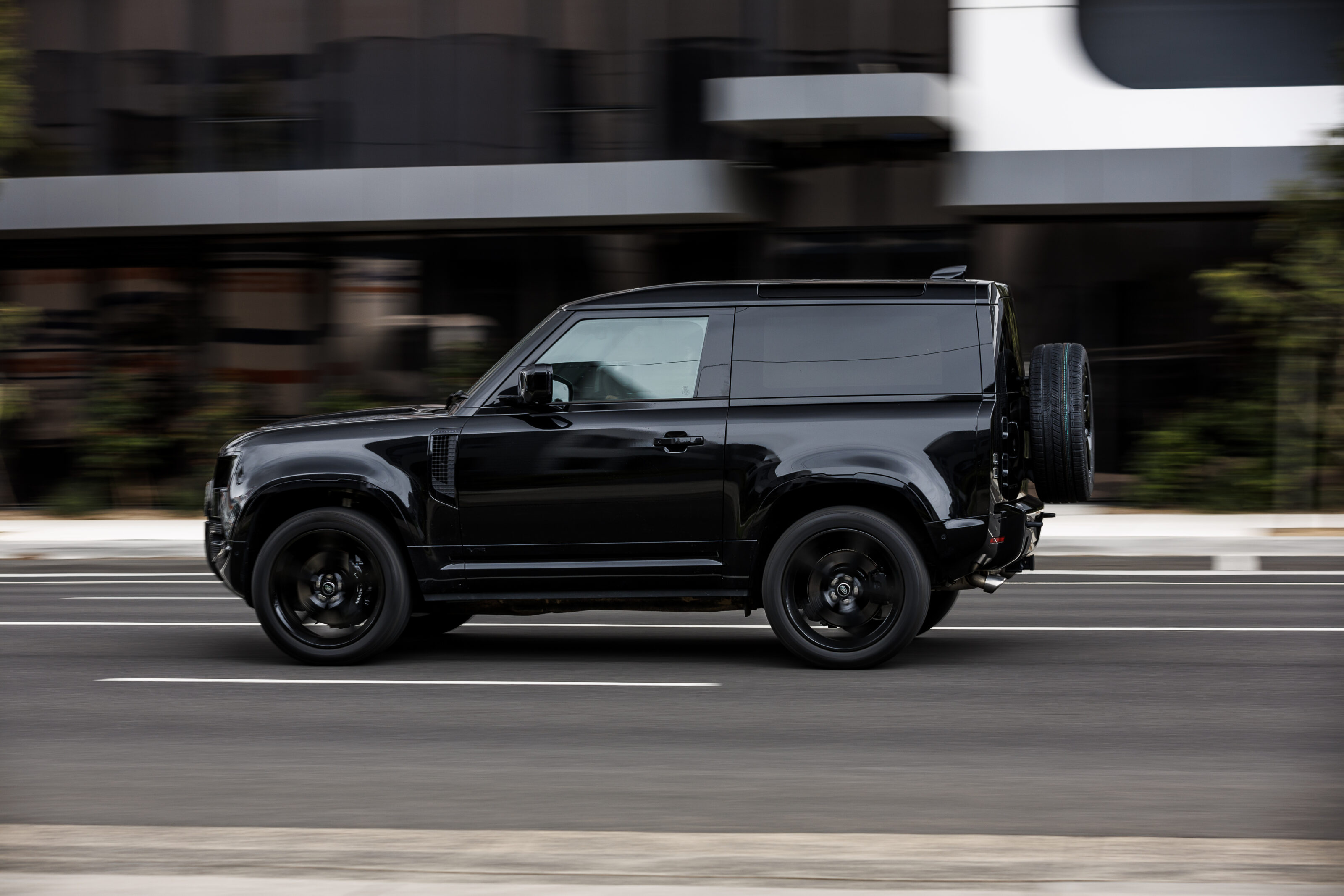
Aside from the mechanical centrepiece under the bonnet, it’s a consummate urban road car with revised adaptive air suspension delivering deft body control throughout the speed envelope.
Like the non-V8 variants, the most athletic Defender 90 retains the short wheelbase characteristics of pitch, dive and roll but subtle dynamic developments such as chunkier anti-roll bars and spring/damper revisions make a noticeable improvement to lateral body control.
No, it won’t corner flat in sports-car-like fashion, but it feels markedly more tied down than mainstream Defender 90 variants, and you can distinctly feel the car’s mass settle confidently over its outside rear tyre in mid-corner power down.

Its steering still possesses a slower off-road-biased ratio with an on-centre feeling that can feel a little unmatched by the car’s increased pace, but it’s accurate nevertheless and does a good job of transmitting the front wheels’ position to the driver and feels well-weighted in the hands.
Sizeable 350mm front brake rotors, clamped by six-piston Brembo calipers do an agreeable job of arresting the Defender’s 2470kg of mass from speed but the stopping distance feels long and the pedal doesn’t offer the feel and feedback for fine modulation and transient braking inputs.
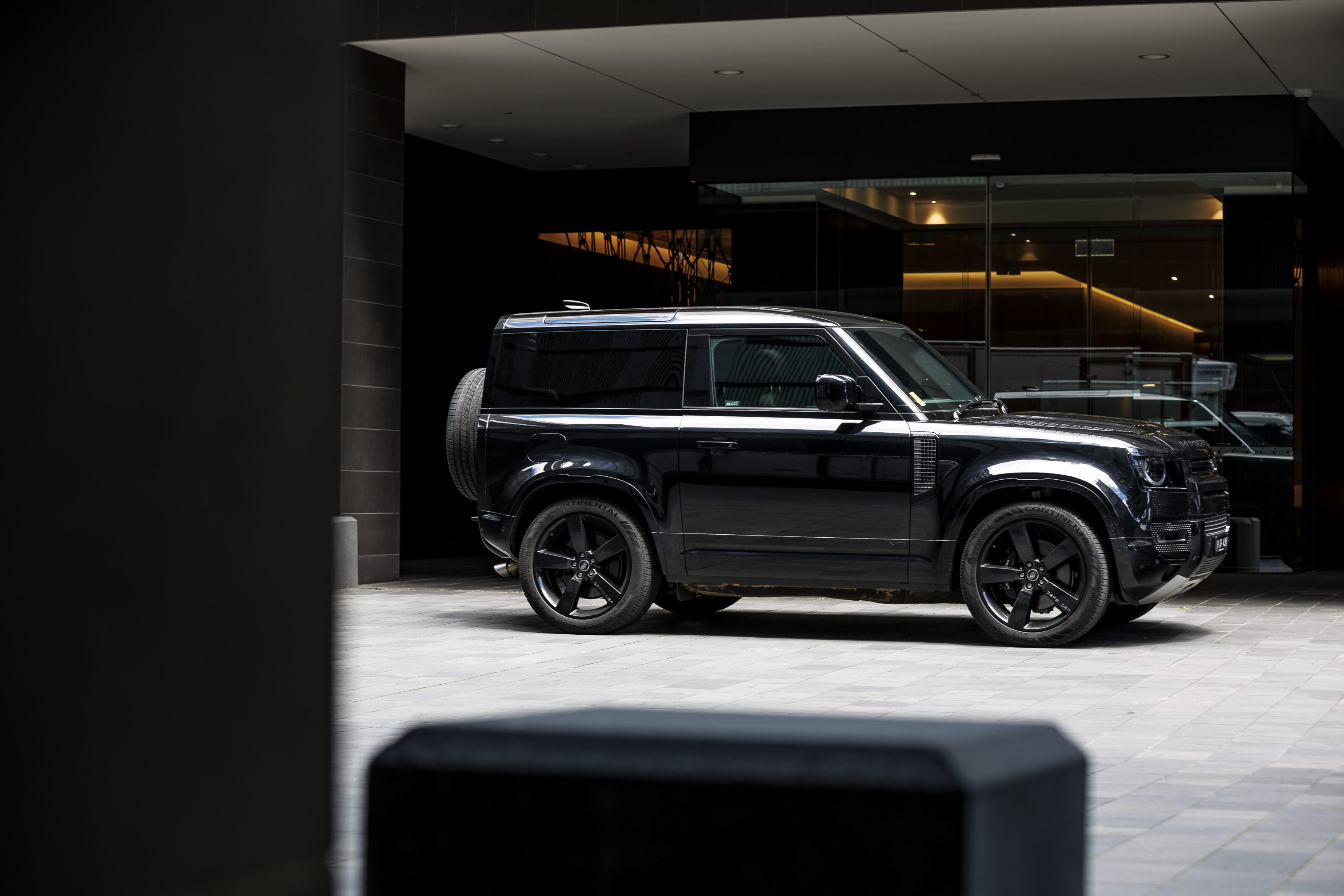
The large performance rotors also hinder inner barrel clearance and limit wheel choices to a minimum of 20 inches, which may further hinder tyre choice for those seeking more focused all-terrain tyre options, while ultimate road-going dynamics are ultimately hampered by the standard-fit all-season 275/45R22 Continental CrossContact rubber.
Regardless, the V8 ‘shorty’ is entertaining and more than confident enough to guide, if not outright push, through twisting bits of tarmac.
How is it on fuel?
Land Rover’s combined-cycle fuel usage claim for the V8 Defender 90 is 12.8L/100km, while our week-long test returned a figure of 14.7L/100km.
Of course, with this powerplant in a vehicle of this shape and weight, fuel usage is heavily right-foot dependent and we’d imagine JLR’s claim is attainable on a sympathetic long-distance cruise.
The Defender packs a 90-litre fuel tank and demands a minimum of 95 RON fuel.
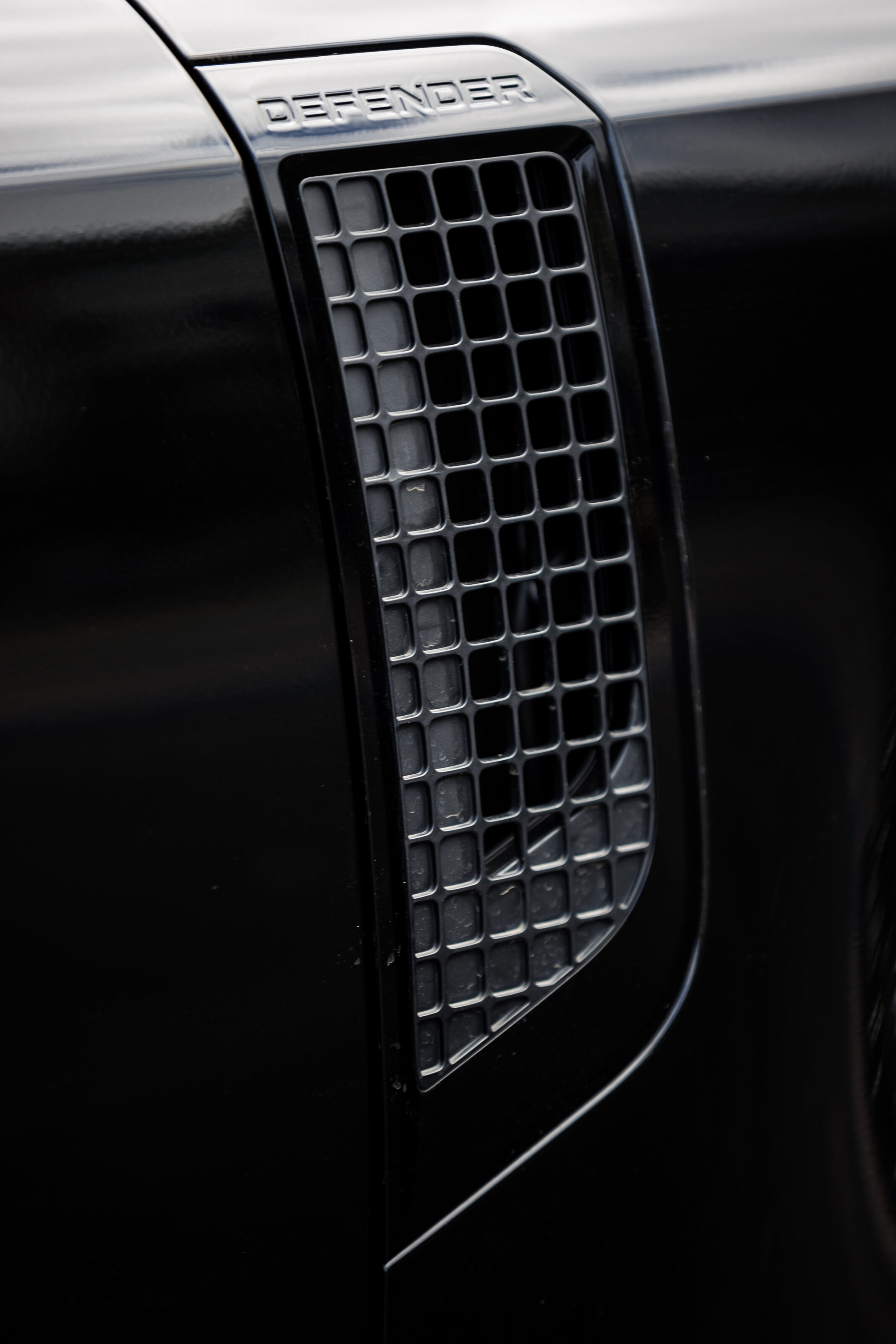
How safe is it?
The Land Rover P525 Defender 90 bears a five-star rating from ANCAP, shared by all current Defender variants except for the 110 Hard Top commercial vehicle, which is currently unrated.
Land Rover equips the Defender 90 with dual front, side and curtain airbags.
It features autonomous emergency braking with junction assist as well as pedestrian and cyclist detection.
Other safety suite features include lane-keep assist, blind-spot monitoring, rear cross-traffic alert, traffic sign recognition, door exit warning, driver fatigue monitoring and a 360-degree camera system.
Warranty and running costs
Land Rover’s vehicle warranty spans five years and unlimited kilometres.
Unlike vehicles with conventionally fixed service intervals, Land Rover Defenders internally monitor distance covered, conditions endured and driver behaviour, also noting any faults or error codes, and will display a message signalling an upcoming visit to the service centre, whenever required.
A pre-paid five-year service plan, valid up to 130,000km, is available for $3750.
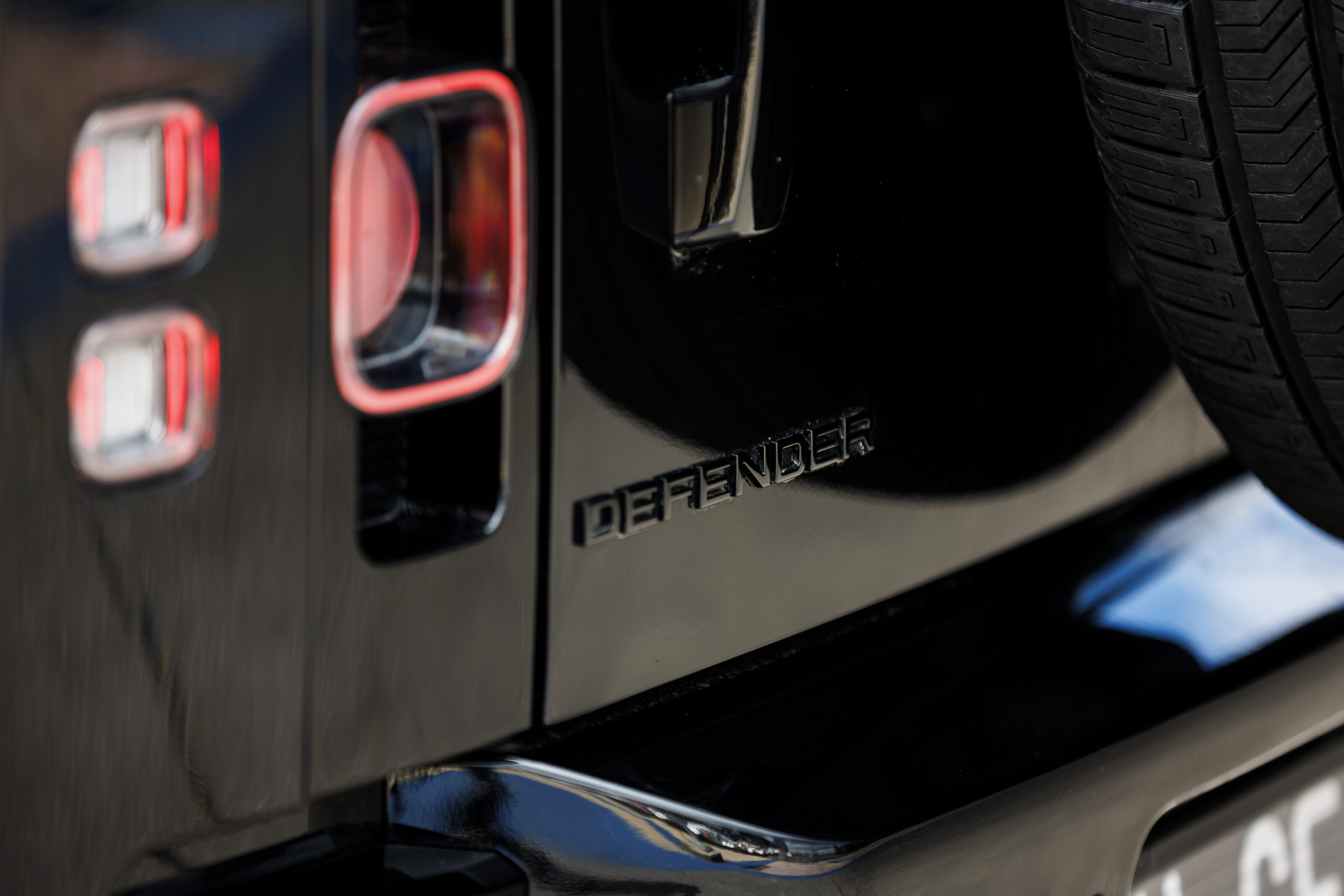
VERDICT
The V8-powered Land Rover Defender 90 is a characterful and charming unit that feels dense, always surefooted and positively bulletproof.
Opting for this particular package, with its stylish short-wheelbase body and thunderous supercharged V8, demands a series of pragmatic compromises.
The price of entry is high, the rear seats are hard to access and the boot is small. It’s not as plush as the four- or six-cylinder Defenders, and it’s not as dynamic or poised as similarly priced performance and premium SUVs from rival marques.
However, the P525 Defender 90 isn’t a car steeped in pragmatism, it’s one steeped in the experience. And if you’ve settled on a supercharged V8 Defender ‘shorty’ that nudges a quarter-million dollars on the road, it’s fair to surmise that pragmatism isn’t at the forefront of your purchasing decision.
Even when faced with the most cynical of observers, the V8 Defender 90’s charming toy-like design, matched with a powerplant to be cherished in this age of efficiency, delivers an indubitable charisma and feels undeniably cool.
It really is a big loveable beast, and while there’s no shortage of premium rivals in this space and price point, there’s no rival that makes you feel quite so Bond-villainous as you do in the V8-powered Land Rover Defender 90.
For some, that’ll be worth every penny.
Specifications
| 2023 Land Rover Defender 90 P525 V8 | |
|---|---|
| Body | 3-door, 5-seat large SUV |
| Boot min / max | 397L / 1563L |
| Drive | permanent four-wheel |
| Engine | 5.0-litre V8 petrol, DOHC, supercharged |
| Max power | 384kW @ 6000rpm |
| Max torque | 625Nm @ 2500-5500 |
| Transmission | 8-speed automatic |
| Fuel consumption (claimed) | 12.8L/100km |
| Fuel consumption (tested) | 14.7L/100km |
| Weight | 2195kg |
| L/W/H/W-B (mm) | 4323/2105/1969/2587 |
| 0-100km/h | 5.2sec (claimed) |
| Price | $221,300 + on-road costs |
| On sale | now |
Score breakdown
Things we like
- Undeniably cool
- Bulletproof feeling
- Engine to savour (while we can)
Not so much
- Second-row access
- Small useable boot floor
- Rear seats don't fold flat
We recommend
-
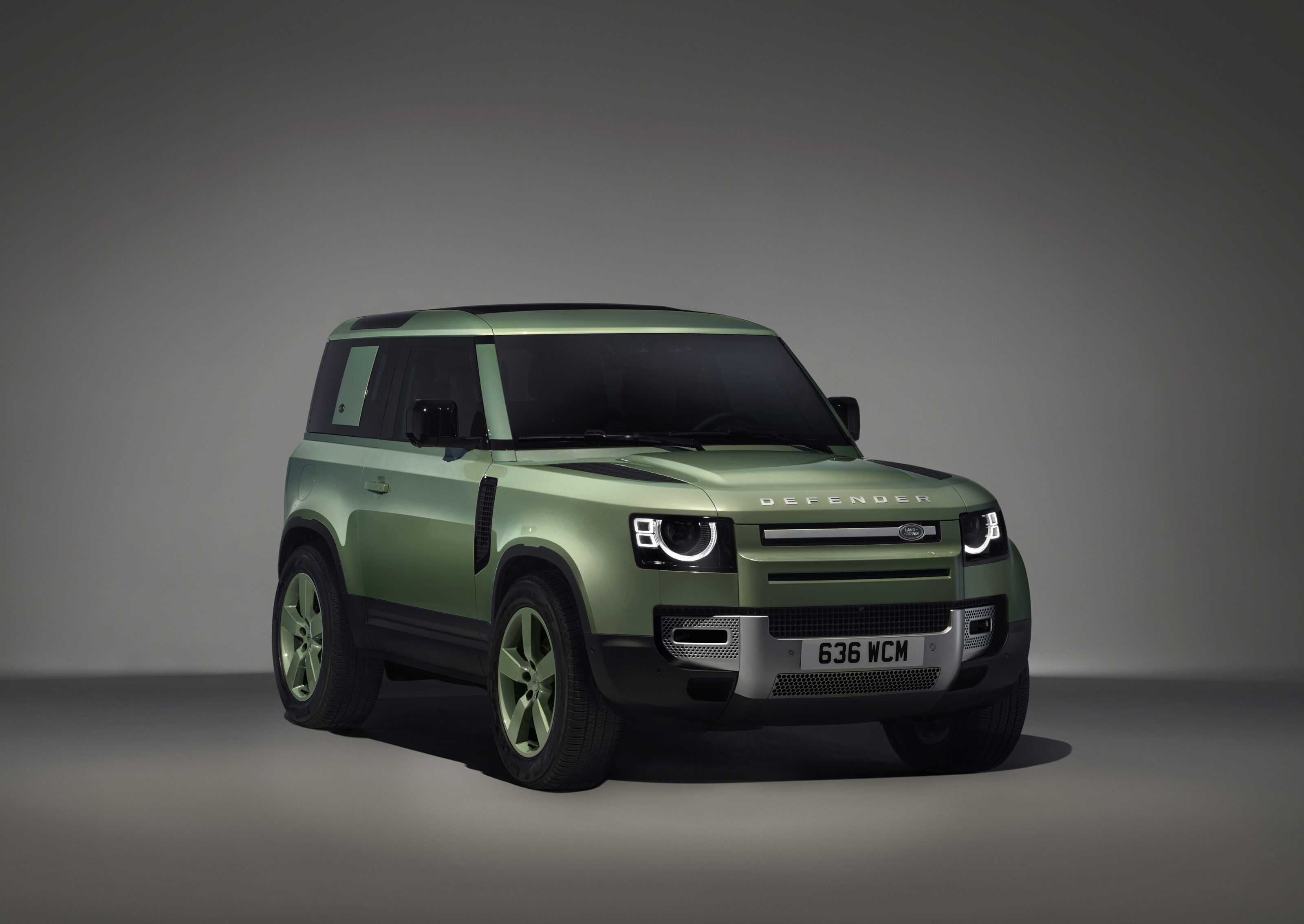 News
News2023 Land Rover Defender 75th anniversary Limited Edition pricing and features for Australia
A small number have been made available for our market
-
 News
News2025 New Car Calendar: All the new cars coming to Australia
Take a look at our list of what is expected to launch in Australia in 2025 – plus those we might not see locally just yet


